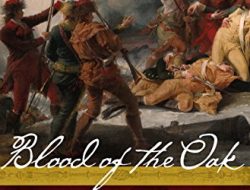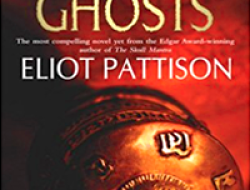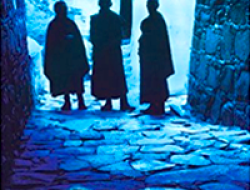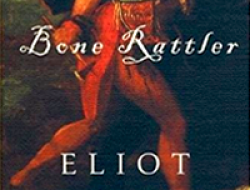
ABOUT THE BOOK
Publisher: Soho Press, Incorporated (June 2009)
Shan Tao Yun is an exiled Chinese national and a former Beijing investigator on parole from the Tibetan gulag to which he had been consigned as punishment. He is ferrying a corpse on muleback over the slopes of Chomolungma — Everest — at the request of a local wisewoman who says the gods have appointed this task to him, when he encounters what looks like a traffic accident. A government bus filled with imprisoned illegal monks has overturned. Then Shan hears gunfire. Two women in an approaching sedan have been killed. One is the Chinese minister of tourism; the other, a blond Westerner, organizes climbing expeditions. Though she dies in his arms, Shan is later met with denials that this foreigner is dead.
Shan must find the murderer, for his recompense will be the life and sanity of his son, Ko, imprisoned in a Chinese “yeti factory” where men are routinely driven mad.
AWARDS
The Lord of Death was chosen as one of the Top 100 Books of 2009 by Publisher’s Weekly–one of only seven mysteries to make it.
REVIEWS
“Lord of Death is the sixth (following Prayer of the Dragon) in Eliot Pattison’s wrenching mystery series that began with The Skull Mantra. It stars ex-Beijing Inspector Shan Tao Yun and focuses on the plight of the Tibetan people under brutal Chinese occupation. Disgraced for his anti-corruption investigations, Shan labored alongside Buddhist monks Lokesh and Gendun in the People’s 404th Construction Brigade. Once released, he continued his own spiritual journey in Tibet, helping set things right whenever possible.” — Bookloons
“In Beautiful Ghosts, Shan suffered a painful reunion with his son Ko – who grew up a rebellious hooligan. Now Ko is also in Tibet, imprisoned and under threat of ‘cerebral pasteurization‘ in what locals call the yeti factory, ‘a hospital for the criminally insane‘. As The Lord of Death opens, Shan is escorting the corpse of a sherpa who died in a climbing accident (he was assigned the task by a local wisewoman) when he comes upon an avalanche that crushes a military bus carrying monks to imprisonment. Most of them escape but an old lama remains to care for the injured driver. Soon afterwards, Shan comes upon two women who have been shot. One is dead (the Chinese minister of tourism) and one dying (blond American climber, Megan Ross).
Though Shan is at first arrested for the killings and tortured, the high-ranking Tibetan who employs him wins his release, demanding that he retrieve the sherpa’s corpse (which has gone missing) as the other sherpas will not work until it’s found and climbing season has begun. Without Shan to blame for the murder, Major Cao picks the next available suspect and arrests Colonel Tan, who happens to be Shan’s only hope of saving his imprisoned son. What follows is a race against time to find the real killer. This takes Shan far into the past to the time when a strong resistance group (trained by the CIA) fought the Chinese invaders – and were ultimately betrayed by one of their own.
As always, Eliot Pattison tells a harrowing tale, sadly based on reality, in The Lord of Death. And as always, he leaves room for hope and a degree of redemption for even the worst of evildoers. If you haven’t found this series yet, it’s a must read for anyone who loves a good mystery or has an interest in Tibet’s plight. And don’t miss the Author’s Note at the back of the book, that talks about the ‘American connection to the Tibetan resistance‘, long shrouded in secrecy. Highly recommended!” –Hilary Williamson
“Readers seeking a change from urban whodunits have embraced Edgar Award–winner Pattison’s superlative series set in ethereal, enigmatic, long-enduring Tibet. Shan Tao Yun, disgraced Beijing investigator and survivor of a Tibetan gulag, now spends his days quietly dwelling among residents of the “Roof of the World.” Over the years, his intimate knowledge of the inner workings of the Chinese political system has proved invaluable in solving a host of compelling conundrums. In this sixth installment (after Prayer of the Dragon, 2007), Shan is transporting a corpse over the slopes of Mt. Everest when he hears gunfire. Two women-a Chinese minister and an outspoken American hiker-have been shot and left for dead at the side of the road. The Chinese authorities are quick to blame the inhabitants of a local village, who have long harbored animosity toward a government that sees Tibet’s majestic mountains as little more than a tourist commodity. Shan questions revered soothsayers and surly colonels in search of answers, ever aware that the survival of his son Ko-currently imprisoned in a Chinese asylum-depends on his success. Pattison serves as literary ambassador to beautiful, brutal Tibet in a tale that engages, enlightens, and entertains.” –Allison Block










